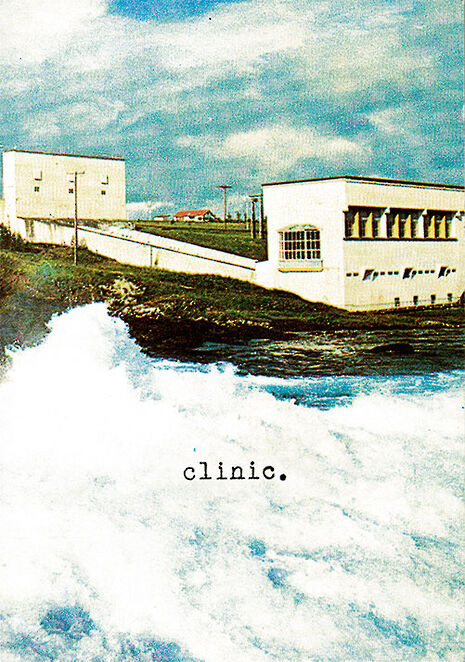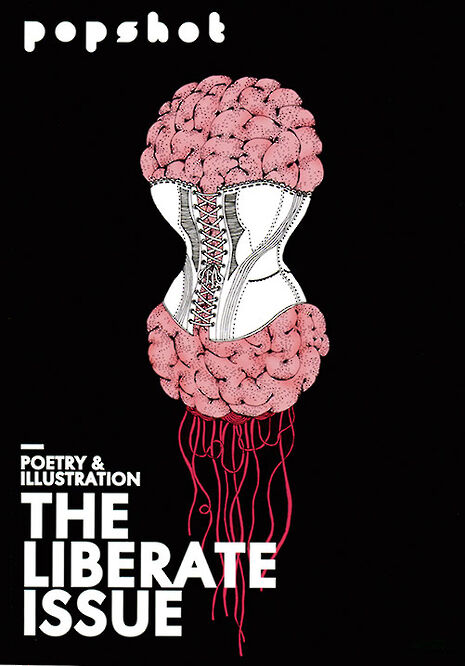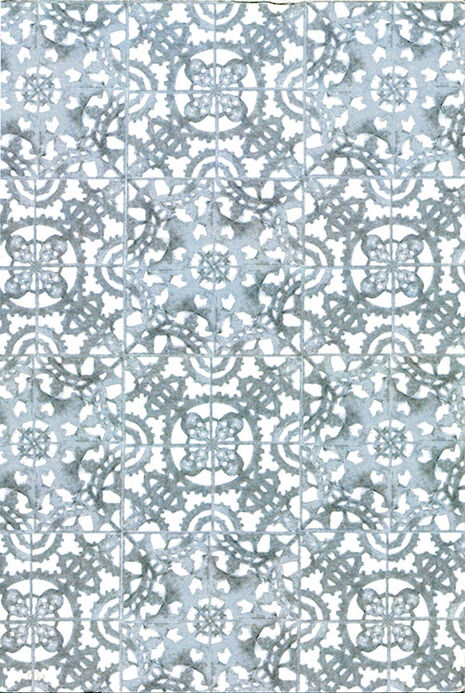‘We have more ways of saying things than things worth saying’
As conventional publishing is commercialised by market pressures, writers and artists are taking matters into their own hands. Zeljka Marosevic flicks through the pages of the independent magazines that are showcasing the best of new writing

It’s National Poetry Day and outside a pub in New Cross, Rachael Allen is anxious about her poetry, art and music event which is taking place indoors. "It’s not very busy, is it? Does it seem busy to you? There were more people here last time." By the time we head back in for the night’s second instalment of poetry readings, the room’s floor is full of enthusiastic, cross-legged attendees, and Allen, along with fellow members of her poetry outfit, Clinic Presents, is reciting her work. Afterwards a band will play downstairs, next to the make-shift ‘Zine Workshop’; more poetry follows later.
Clinic Presents is one of a host of independent poetry magazines that are helping to shape and record the output of new writing today. Its organisers have only just graduated from Goldsmiths, where they met and decided to establish a publication. Where did they get the money from? "We didn’t have any." says Allen, "So we put on loads of poetry nights, one after another and raised £700. Then we put it all into the first publication. We’re not making any money. If anything, I’m probably out of pocket a hundred quid". This not-for-profit mentality extends across the whole trend; no one’s in it for the money. Jacob Denno who runs and edits Popshot, a slick offering of poetry and illustration, admits his task often provokes despair, "When you get printing bills that stretch into the thousands, it can make you question what on earth you’re doing." Popshot is sustained by savings and subscriptions, but Denno tells me funding isn’t the biggest obstacle: "I believe in the survival of the fittest, if you really want it to work out and last, you’ll put in the time and effort to make it happen off your own back."
Indeed, what’s most admirable about these publications is that they come from a remarkably laborious, joint labour of love: a small group of (often young) individuals investing their time and enthusiasm in writing and print. Gemma Germains works for Mercy, who describe themselves as a ‘Design Agency and Literature and Arts Collective’. Their slogan, "If we don’t care, who will?" gives you a clue of just how seriously and personally they take their position. Impressed by their website (www.mercyonline.co.uk), which is brimming full of past projects and a new e-zine, I ask Germains how the agency got to be so big. She admits it’s not quite how it looks, "We’re not a big agency- we’re tiny, and it’s been really hard to even get to this stage. Every step up the food chain takes a gargantuan amount of effort. Only a bunch of idiots would work like this." It’s a sentiment echoed by Allen, "My Mum keeps ringing me and saying "Why are you still wasting your time on poetry?You need to get a real job". It’s mad that we’re all doing it really."

But independent publishing also has unique and gratifying advantages. It rewards these magazines’ creators with the ability to choose what they print and how. When I meet Sam Riviere, one of the poets and architects of Stop/Sharpening/Your/Knives (S/S/Y/K), a publication which is now entering its fourth edition, we spend a long time discussing the magazine’s careful design, the typeset of which Riviere personally selected. He relates the agonies of laying out specific poems and the joy of moving from a flimsy pamphlet to a bound book. Did he ever think of just creating an e-zine? He shakes his head, "It wouldn’t be the same. A printed publication is more of an event, something you can hold on to." Germains agrees, "I think print is the tool of the serious publisher now. An investment has to be made when you’re dealing with print; publishers have to spend their money. But gorgeous print instantly makes zines more desirable. Publishers should realise that spending a bit more on papers and inks would extend the lifespan of their zines, making it a product their readers want to keep forever."
Illustration and photography are important too: both S/S/Y/K and Popshot commission artists to illustrate their poetry, while Clinic Presents is interspersed with photography collections and art work. Such a combination can be precarious, detracting from the writing, or, worse still, giving the reader a visual representation of the poetry before the imagination has a chance to summon one. Denno sees things differently: "I think poetry benefits when accompanied by visual representation. It’s ignored by a vast number of literary magazines but the relationship between word and image is age-old and works beautifully." Actually, it seems more like a modern progression from an old idea. By placing modern art and photography next to poetry, these magazines are situating poetical writing in a contemporary context, aligning poetry with new forms of art and reinvigorating what a poem can be. It works the other way too. Suddenly, in the middle of Clinic Presents, the poetry gives way to ‘Bing Bing and Me’, a series of black and white photographs capturing the life of one of China’s biggest superstars. In one image, a moment’s respite from the paparazzi and screaming fans, she is caught in a white dress, dancing among the trees to an unheard elegy.
Yet it’s easy to be bowled over by the lustrous aesthetics of these publications and forget the main event: the writing. The form of these magazines is what makes them so suitable to new writing. A zine doesn’t suggest the same seriousness as a book, but nor is it as flippant as a pamphlet, allowing the poetry to be a sincere form of experimentation. It’s also a chance for emerging poets to get their poems out of their heads and into a critical arena, and first they must be judged by the editors themselves. For as Riviere is keen to stress, nothing is simply thrown into his magazine. The editors take their time reading all the submissions and picking a final cut of twenty, and because there are four editors, they prevent the magazine from becoming the embodiment of just one person’s taste. So are there poems in the magazine that Riviere doesn’t like? "Yes, sometimes, but I understand why they’ve been chosen. I can appreciate their qualities, even if they’re not my kind of thing." This democratic and fastidious approach is refreshing in comparison to the closed-off manner in which established publishing houses are being run, and it’s also startling considering that Denno received around 800 hundred submissions for the last edition of Popshot. He eventually narrowed it down to a lean twenty. "I can only assume that our next call for submissions will comfortably surpass that" he says, "As a result, there’s not really any need to commission poets anymore. I’m very keen not to become one of those editors who just publishes their friends and famous names. The submissions process allows someone’s poetry to stand out, rather than their name."

A quick glance through the ‘Biographies’ section of S/S/Y/K shows that the poets featured in these publications are making a name for themselves: you encounter poets who have also been published by esteemed publications like the TLS and The Poetry Review; others by classic publishing houses such as Faber & Faber; and then there are all the prize-winners. These magazines, then, are not just a starting ground but another and justly applicable way in which to meet new poetry.
The meeting of individual poets with creative communities is another key aspect of these groups, and collaborations have been fruitful and stimulating. Mercy and Clinic Presents recently teamed up for Colour, a show that was part of Liverpool’s Biennial Festival. While musicians improvised on stage, poets accompanied them with readings of work themed on primary colours. In front of them, artists drew on huge sheets of acrylic, slowly obscuring the performers with their colourful drawings. The links between poetry and other artistic disciplines are already there within poetry: reading a poem is a performative, visual, oral and aural experience; events such as these are interrogating relationships and pushing at their boundaries. But it’s pretty clear that everyone’s having a lot of fun too.
I wonder, however, whether happenings like Colour might be interpreted by outsiders as a clique activity, off limits to those that aren’t personally involved. "It didn’t feel like that until you mentioned it," says Germains, "but yes, you’re right-ish". Then she adds, "It’s much more about friends getting excited about ideas." Denno is more defensive: "I would hope that Popshot doesn’t have any form of a clique around it as that was one of the main reasons for starting the magazine - to create a place where anyone and everyone is considered equally. I would be horrified if Popshot was ever described as cliquey." Yet at some points during my interaction with these groups, I hesitated over whether they seemed too trendy and at a risk of turning poetry into a symbol of ‘cool’, the linguistic equivalent of a Holga camera. Sure enough in New Cross, there were enough hip kids in bobble hats to make me suspicious that this was just another art school outpost.

But when you turn back to the magazines themselves, you realise that such appearances are irrelevant, and it’s the integrity of their purpose that matters.In the foreword to the first issue of Clinic Presents, the poet Jack Underwood writes what can only be described as a manifesto for the magazine. "In blunt terms, we have more ways of saying things than things worth saying, and in this situation it is unsurprising that as a culture we keep on talking" he begins. It’s a perilous way to inaugurate a magazine whose very purpose is to print more words. But he goes on to articulate the relevance and value of Clinic Presents, and indeed of all these magazines, "[Clinic Presents] is about a collective enterprise and a feeling of responsibility to the reader...a humble knowledge of what offering a poem to the world means; each new poem has a duty to add to the discipline, the tradition of setting reality in new terms."
 Comment / Plastic pubs: the problem with Cambridge alehouses 5 January 2026
Comment / Plastic pubs: the problem with Cambridge alehouses 5 January 2026 News / Cambridge businesses concerned infrastructure delays will hurt growth5 January 2026
News / Cambridge businesses concerned infrastructure delays will hurt growth5 January 2026 News / New movement ‘Cambridge is Chopped’ launched to fight against hate crime7 January 2026
News / New movement ‘Cambridge is Chopped’ launched to fight against hate crime7 January 2026 News / AstraZeneca sues for £32 million over faulty construction at Cambridge Campus31 December 2025
News / AstraZeneca sues for £32 million over faulty construction at Cambridge Campus31 December 2025 Interviews / You don’t need to peak at Cambridge, says Robin Harding31 December 2025
Interviews / You don’t need to peak at Cambridge, says Robin Harding31 December 2025









